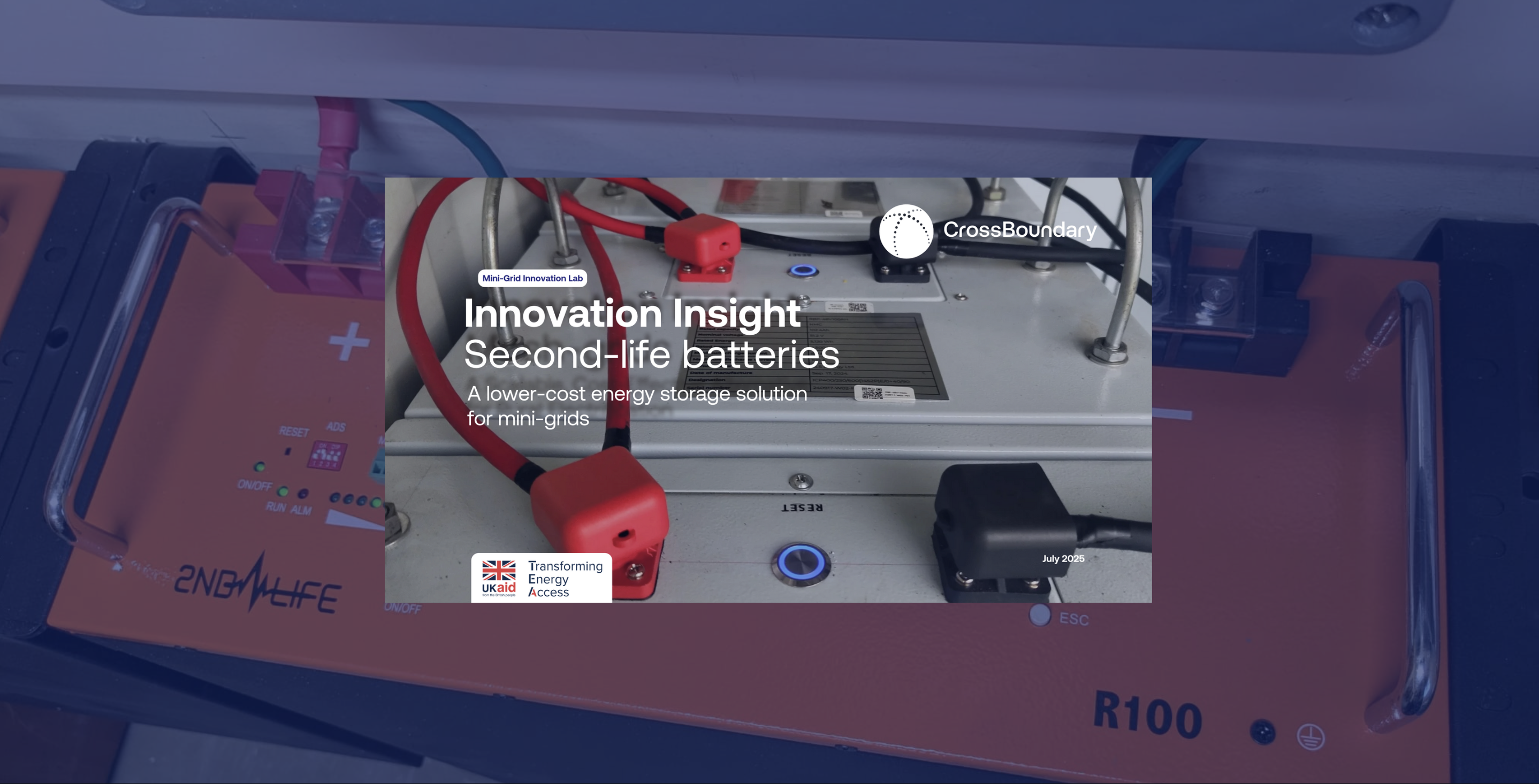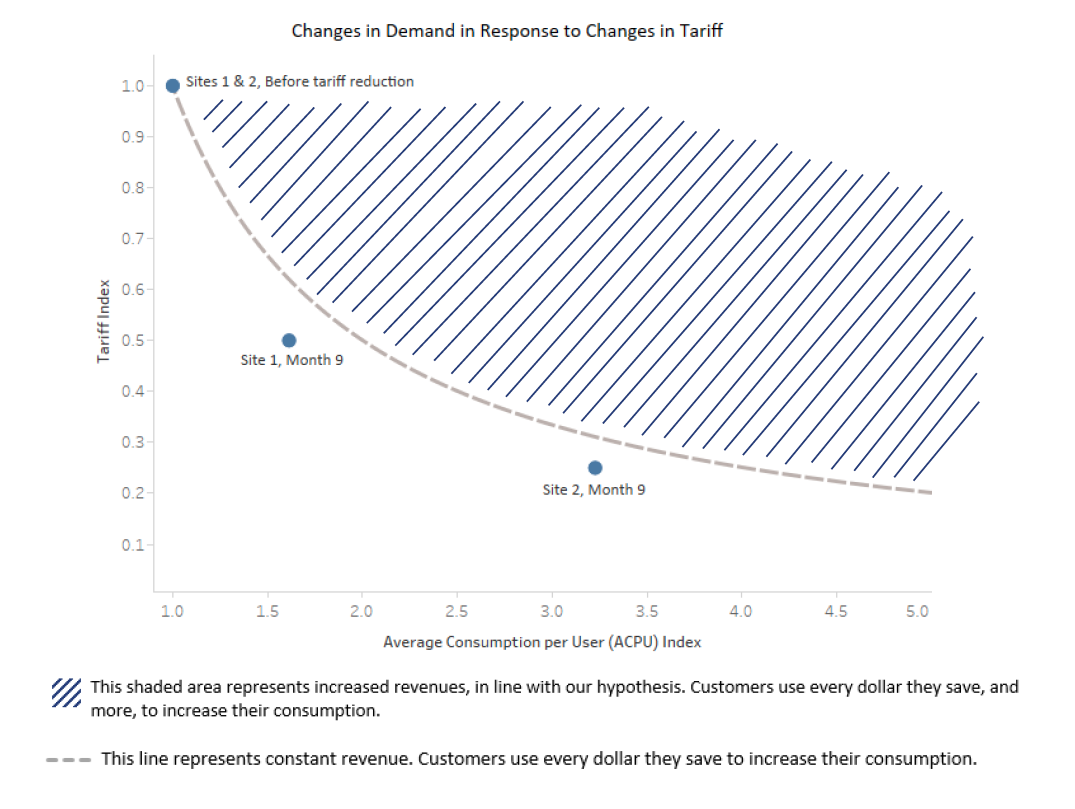
Second-life batteries offer up to 28% cost savings for mini-grid storage while advancing Africa’s electrification goals
Repurposed electric vehicle (EV) batteries could accelerate Africa's rural electrification efforts, according to new findings from CrossBoundary's Innovation Lab.
Repurposed electric vehicle (EV) batteries could accelerate Africa's rural electrification efforts, according to new findings from CrossBoundary's Innovation Lab.
Testing across South Africa, Nigeria, and the Democratic Republic of Congo shows second-life lithium batteries deliver 11-28% upfront cost savings compared to new batteries while extending the productive life of valuable battery materials.
What are second-life batteries?
These are repurposed batteries that retain substantial capacity after completing their initial use and are applied to less demanding secondary applications. For this study, the Innovation Lab focused on batteries repurposed from EVs for mini-grid energy storage.

Tombo Banda, CrossBoundary Managing Director and Innovation Lab Lead
The Innovation Lab conducted field testing of lithium-iron-phosphate (LFP) batteries in South Africa and Nigeria, plus lithium nickel manganese cobalt oxide (NMC) batteries in DRC, comparing performance against new battery control sites.
Strong upfront savings with geography-specific performance:
Second-life batteries demonstrated consistent cost advantages across all three markets, with upfront costs 11-28% lower than new batteries. All tested batteries fell below industry benchmark ranges, confirming material savings potential. However, lifetime economics varied significantly by location and battery chemistry.
The critical 7-year threshold:
The study’s detailed economic modeling reveals that second-life batteries only deliver lifetime cost advantages when they last seven years or longer. Batteries requiring replacement every six years see their initial savings eroded by 15-18 years of mini-grid operation.

Charles Sweetland, Data Analytics Lead, CrossBoundary Advisory
Over the next year, CrossBoundary’s Mini-Grid Innovation Lab will continue monitoring technical performance across test sites to validate initial findings and confirm capacity retention projections. Results will inform ongoing efforts to standardize second-life battery deployment and establish industry-wide best practices.


